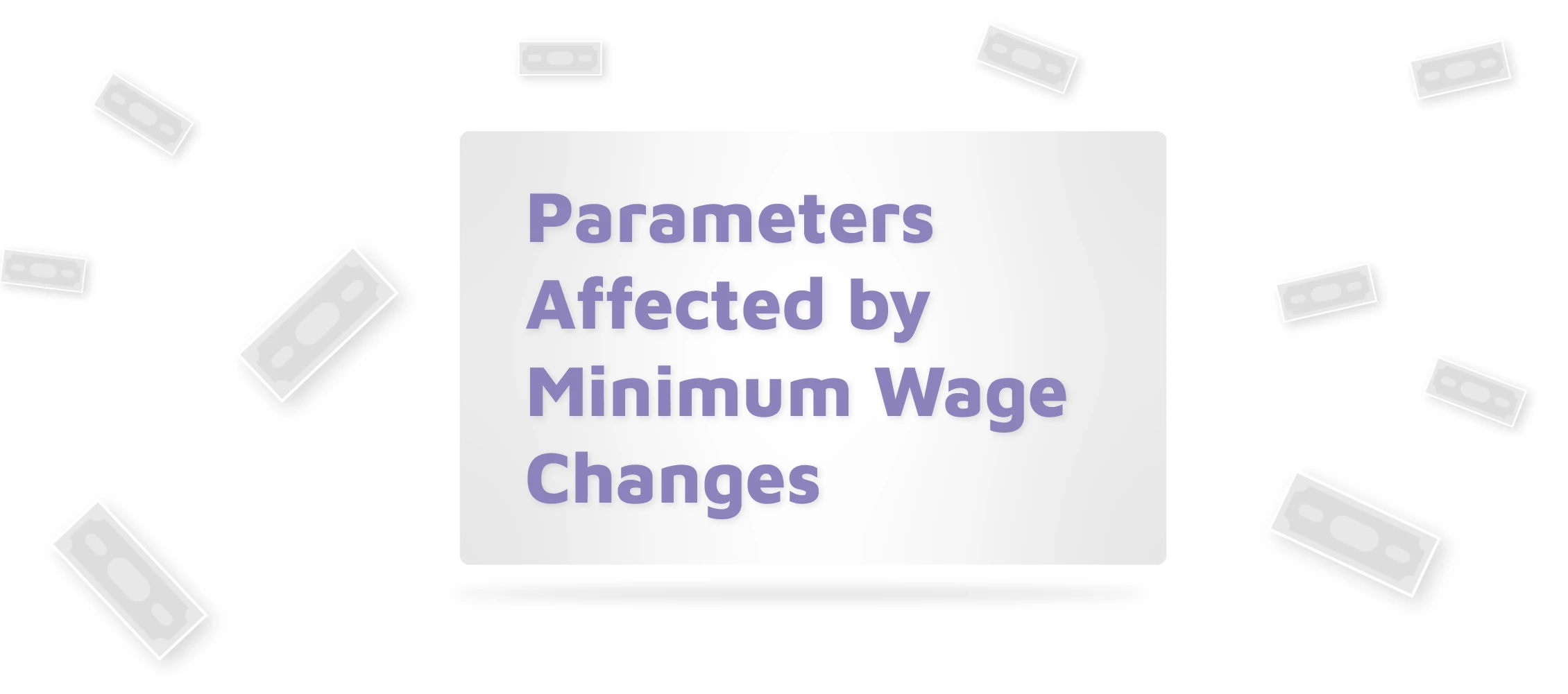23 Mayıs 2025
What is SGDP (Social Security Support Contribution)?

In today's modern work life, the concept of retirement no longer signifies a complete withdrawal from professional activity. Economic conditions, vocational commitment, and the sustainability of a skilled workforce are among the many factors prompting individuals to re-enter the workforce after retirement. At this point, the Social Security Support Contribution (SGDP) emerges as a crucial practice that employers must consider carefully, both in terms of legal obligations and cost planning.
The SGDP system allows retirees who have already begun receiving pensions to rejoin the workforce, thereby contributing once again to the social security system without the suspension of their pension benefits. However, this system differs from the conventional insurance model, and several implementation details—if misunderstood—can lead to serious legal and financial complications. This article will cover the definition of SGDP, its scope of application, the updated contribution rates for 2025, and the key aspects of its implementation.
What is SGDP?
The Social Security Support Contribution (SGDP) is a premium collected from employers when a retired individual works under an employment contract without the suspension of their pension. Individuals who have begun receiving retirement pensions are assessed under the SGDP scheme if they continue working or return to the workforce, without transitioning to standard social insurance coverage. This arrangement allows retirees to retain their pension benefits while enabling employers to benefit from experienced labor at lower contribution rates.
SGDP is a specific type of insurance that comes with certain limitations for both employees and employers. Unlike full social insurance coverage, it does not include long-term insurance branches, unemployment insurance contributions, or the accrual of a second retirement entitlement. However, it ensures that the employee remains entitled to healthcare services and retains protection against occupational accidents and diseases. In this way, the system supports the retiree in maintaining both productivity and continuity of social security coverage.
Legal Basis of SGDP
The regulations concerning the Social Security Support Contribution (SGDP) are detailed in Article 30 and Provisional Article 14 of Law No. 5510 on Social Insurance and General Health Insurance. According to these provisions, if individuals who have been granted an old-age pension start working under an employment contract (within the scope of Article 4/a), their pension payments are not suspended; however, their employers are required to pay SGDP on their behalf.
At the institutional level—particularly for human resources and payroll departments—the application of SGDP introduces accounting and declaration differences between standard insured employees and those under SGDP coverage. Employees subject to SGDP must be reported through the "Document Type No. 2: Employees Subject to Social Security Support Contribution" section of the combined withholding and premium service declaration. Since unemployment insurance and long-term insurance branches are not applicable for SGDP-covered personnel, payroll systems must process such employees using the correct insurance codes. Otherwise, employers may face retroactive penalties, erroneous premium accruals, or accidental suspension of pension benefits during audits by the Social Security Institution (SSI).
2025 Social Security Support Contribution (SGDP) Rates
As of 2025, the SGDP premium rates in effect are structured as follows:
- Employee (Retiree) Share: 7.5%
- Employer Share: 22.5%
- Short-Term Insurance Branches Premium (Employer Share): 2.25%
- Total SGDP Rate: 32.25%
These rates apply exclusively to retirees working under Article 4/a (Social Insurance Institution - SSK) status. The implementation differs for those under Article 4/b (Self-Employed - BAĞ-KUR) and Article 4/c (Retirement Fund). For example, if an individual retired under 4/c status returns to public service, SGDP does not apply; instead, their pension is directly suspended, and full insurance coverage is reinstated. Additionally, SGDP is deducted from the pension benefits of retired individuals who are members of the board of directors in joint-stock companies, partners in limited liability companies, and partners in Commandite companies with share capital divided into shares.
Who Pays the Social Security Support Contribution (SGDP)?
Unlike the standard social insurance premium system, SGDP imposes a narrower set of obligations for both the employer and the employee. The retired employee contributes 7.5% of their gross salary, while the employer pays a total of 24.75% SGDP based on the same amount. The employee's share is deducted from their salary and reflected in the payroll, whereas the employer's share is accounted for as part of the employer's cost burden.
The pension benefits of employees covered under SGDP are not suspended, meaning they can continue working without experiencing a loss of income. However, it is essential that employers accurately and promptly report these individuals to the Social Security Institution (SSI) under SGDP status using the correct insurance codes. Failure to do so may result in the suspension of the employee's pension or administrative penalties due to incomplete or incorrect premium declarations.
In corporate settings, SGDP-covered employees must be tracked separately in payroll systems and reported in the monthly Combined Withholding and Premium Service Declaration. It is also important to note that, unlike fully insured employees, those working under SGDP status are not subject to unemployment insurance contributions and do not accrue long-term retirement entitlements.
Who Is Exempt from SGDP?
The Social Security Support Contribution (SGDP) does not apply to all retired individuals who are employed. According to the regulations of the Social Security Institution (SSI), there are specific circumstances under which retirees may continue working without the suspension of their pensions and without being subject to SGDP deductions. These exceptions are based on factors such as the nature of the work, the sector of employment, and applicable international legislation. As of 2025, the following categories are exempt from SGDP:
- Retired individuals engaged in agricultural activities on a self-employed basis (i.e., retirees continuing agricultural operations under sole proprietorship).
- Retired workers sent abroad by Turkish employers to countries without bilateral social security agreements.
- Individuals appointed to exceptional positions in public institutions outside the scope of Law No. 5335 (e.g., university lecturers).
- Public employees who are not legally permitted to work without suspending their pension and are therefore reported under full insurance coverage (these individuals are subject to full contributions, not SGDP).
Note: Since these individuals are not covered by the SGDP scheme, either their pension benefits continue without interruption, or they are classified under full insurance coverage.
How is SGDP Calculated?
The SGDP calculation process is carried out through the following steps:
- Determination of Gross Salary: The employee's gross monthly wage is identified.
- Employee SGDP Deduction (7.5%): Calculated based on the gross salary and deducted from the employee's wage.
- Employer SGDP Share (22.5%): Calculated on the gross salary and paid by the employer to the Social Security Institution (SSI).
- Short-Term Insurance Branches Premium (2.25%): Also calculated on the gross salary and paid by the employer.
- Total SGDP Amount: The sum of the employee and employer contributions.
- Net Salary Calculation: The employee's net salary is determined by deducting the employee SGDP and other statutory deductions from the gross salary.
Cost Calculation for a Minimum-Wage Retiree Employee (2025)
When a retired employee works under SGDP coverage, the employer's total cost in 2025 is calculated as follows:
| Item | Amount (TRY) |
|---|---|
| Gross Salary | 26,005.50 |
| Employer SGDP Share (22.5%) | 5,851.24 |
| Short-Term Insurance Branches Premium (2.25%) | 585.13 |
| Total Employer SGDP Burden | 6,436.37 |
| Employee SGDP Deduction (7.5%) | 1,950.41 |
| Net Salary (Gross – Employee SGDP) | 24,055.09 |
| Total Employer Cost (Gross + Employer Share) | 32,441.87 |
This calculation is based on the SGDP rate of 32.25%, which replaces the standard 37.5% social insurance contribution rate applied to non-retired employees.
Rights of Retired Employees Working Under SGDP
Retired individuals working under the SGDP framework do not possess the same full range of social security rights as employees under standard social insurance coverage. Nevertheless, they continue to benefit from certain fundamental entitlements:
- Rights They Retain:
- Access to general health insurance (including medical examinations, treatment, and medications),
- Temporary incapacity allowance in cases of work-related accidents or occupational diseases.
- Rights They Do Not Have:
- The number of contribution days for retirement, disability, or survivors' pensions does not increase,
- SGDP payments do not entitle the employee to a second retirement benefit,
- As unemployment insurance premiums are not paid, the employee is not eligible for unemployment benefits.
Notification!






